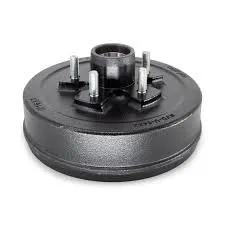
-
 Afrikaans
Afrikaans -
 Albanian
Albanian -
 Amharic
Amharic -
 Arabic
Arabic -
 Armenian
Armenian -
 Azerbaijani
Azerbaijani -
 Basque
Basque -
 Belarusian
Belarusian -
 Bengali
Bengali -
 Bosnian
Bosnian -
 Bulgarian
Bulgarian -
 Catalan
Catalan -
 Cebuano
Cebuano -
 Corsican
Corsican -
 Croatian
Croatian -
 Czech
Czech -
 Danish
Danish -
 Dutch
Dutch -
 English
English -
 Esperanto
Esperanto -
 Estonian
Estonian -
 Finnish
Finnish -
 French
French -
 Frisian
Frisian -
 Galician
Galician -
 Georgian
Georgian -
 German
German -
 Greek
Greek -
 Gujarati
Gujarati -
 Haitian Creole
Haitian Creole -
 hausa
hausa -
 hawaiian
hawaiian -
 Hebrew
Hebrew -
 Hindi
Hindi -
 Miao
Miao -
 Hungarian
Hungarian -
 Icelandic
Icelandic -
 igbo
igbo -
 Indonesian
Indonesian -
 irish
irish -
 Italian
Italian -
 Japanese
Japanese -
 Javanese
Javanese -
 Kannada
Kannada -
 kazakh
kazakh -
 Khmer
Khmer -
 Rwandese
Rwandese -
 Korean
Korean -
 Kurdish
Kurdish -
 Kyrgyz
Kyrgyz -
 Lao
Lao -
 Latin
Latin -
 Latvian
Latvian -
 Lithuanian
Lithuanian -
 Luxembourgish
Luxembourgish -
 Macedonian
Macedonian -
 Malgashi
Malgashi -
 Malay
Malay -
 Malayalam
Malayalam -
 Maltese
Maltese -
 Maori
Maori -
 Marathi
Marathi -
 Mongolian
Mongolian -
 Myanmar
Myanmar -
 Nepali
Nepali -
 Norwegian
Norwegian -
 Norwegian
Norwegian -
 Occitan
Occitan -
 Pashto
Pashto -
 Persian
Persian -
 Polish
Polish -
 Portuguese
Portuguese -
 Punjabi
Punjabi -
 Romanian
Romanian -
 Russian
Russian -
 Samoan
Samoan -
 Scottish Gaelic
Scottish Gaelic -
 Serbian
Serbian -
 Sesotho
Sesotho -
 Shona
Shona -
 Sindhi
Sindhi -
 Sinhala
Sinhala -
 Slovak
Slovak -
 Slovenian
Slovenian -
 Somali
Somali -
 Spanish
Spanish -
 Sundanese
Sundanese -
 Swahili
Swahili -
 Swedish
Swedish -
 Tagalog
Tagalog -
 Tajik
Tajik -
 Tamil
Tamil -
 Tatar
Tatar -
 Telugu
Telugu -
 Thai
Thai -
 Turkish
Turkish -
 Turkmen
Turkmen -
 Ukrainian
Ukrainian -
 Urdu
Urdu -
 Uighur
Uighur -
 Uzbek
Uzbek -
 Vietnamese
Vietnamese -
 Welsh
Welsh -
 Bantu
Bantu -
 Yiddish
Yiddish -
 Yoruba
Yoruba -
 Zulu
Zulu
difference between disc brake and drum brake
Understanding the Difference Between Disc Brakes and Drum Brakes
When it comes to automotive braking systems, two of the most common types are disc brakes and drum brakes. Each system has its own unique characteristics, advantages, and disadvantages. Understanding these differences is crucial for vehicle owners, mechanics, and automotive enthusiasts who want to make informed decisions regarding vehicle maintenance or upgrades.
Basic Operation
Disc brakes operate using a disc-shaped rotor that spins along with the wheel. When the driver presses the brake pedal, hydraulic calipers squeeze brake pads against the rotor, creating friction that slows down the vehicle. On the other hand, drum brakes function using a drum-like component that rotates with the wheel. When the driver engages the brake, shoes inside the drum are pushed against its inner surface, generating friction to slow down the vehicle.
Performance Comparisons
One of the most significant differences between disc brakes and drum brakes is performance. Disc brakes are generally more effective at dissipating heat because of their exposed design. This heat dissipation is crucial during prolonged braking, such as when going downhill or during heavy braking situations, as it helps prevent brake fade—a reduction in braking efficiency due to overheating. Drum brakes, being enclosed, tend to retain heat, which can lead to quicker deterioration under extreme conditions.
Another performance-related aspect is moisture and debris resistance. Disc brakes are less susceptible to performance degradation due to water or mud. When wet, drum brakes can struggle to engage fully, as water can get trapped inside the drum and hinder the brake shoe's ability to make contact with the drum surface. Disc brakes tend to clear water more effectively, making them a preferred option for performance vehicles and those frequently driven in adverse conditions.
difference between disc brake and drum brake

Maintenance and Durability
In terms of maintenance, disc brakes are generally easier to inspect and replace since their components are more accessible. This accessibility makes it simpler for mechanics to check for wear and tear and carry out maintenance work. Drum brakes, in contrast, require the removal of the entire drum for inspection and maintenance, which can be time-consuming and more complicated.
From a durability perspective, both systems have their strengths. Disc brakes typically have a longer lifespan than drum brakes, mainly due to their design and the materials used in their construction. However, drum brakes can still be quite durable under normal driving conditions, especially in lighter vehicles or where intense braking situations are not common.
Applications
Both braking systems have found their own niches in the automotive world. Disc brakes are predominantly used in modern vehicles, particularly in the front, due to their superior stopping power and performance. Many high-performance vehicles—including sports cars—rely entirely on disc brakes for enhanced safety and performance. Meanwhile, drum brakes are still commonly found in rear brake systems of compact vehicles and light trucks, where their effective cost and adequate performance can be more than sufficient for the intended purpose.
Conclusion
In summary, both disc brakes and drum brakes have unique characteristics that make them suitable for different driving conditions and vehicle types. While disc brakes offer better performance, heat dissipation, and ease of maintenance, drum brakes can still be effective in specific applications, usually at a lower cost. When choosing between the two for a vehicle or considering upgrades, it's essential to weigh the pros and cons based on driving habits, vehicle types, and personal preferences. Understanding these differences not only aids in better vehicle performance but also contributes to overall road safety.
-
What Are Drum BrakesNewsJul.07,2025
-
Understanding Brake Drum MaterialNewsJul.07,2025
-
Semi-Trailer Brake Drum: A Key Component for Extreme Loads and Long-Distance TransportNewsJul.07,2025
-
Drum Brake Pads for SaleNewsJul.07,2025
-
Brake Drums for SaleNewsJul.07,2025
-
Brake Drum ManufacturerNewsJul.07,2025
-
Aluminum Brake Drums: The Future of High-Performance CarsNewsJul.07,2025
